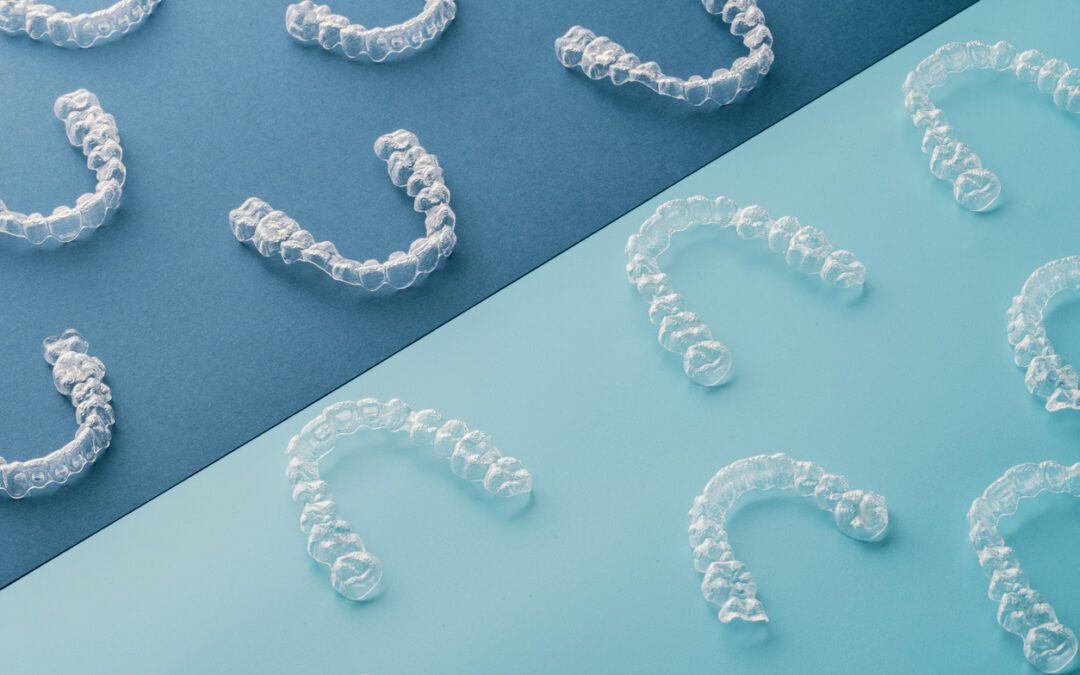How Cutting Edge Technology is Changing the Dental Industry
In recent years, the field of orthodontics has experienced a remarkable transformation, thanks to the integration of cutting-edge technology. One of the most significant advancements propelling this change is the utilization of 3D printing. This groundbreaking technology is revolutionizing the way orthodontic treatments are planned, designed, and executed, offering patients more precise, efficient, and personalized solutions. In this blog, we’ll delve into the role of 3D printing in reshaping the landscape of orthodontics and explore the incredible potential it holds for the future of dental care.
Precision in Treatment Planning
Traditionally, orthodontic treatments relied on cumbersome physical impressions and molds of patients’ teeth, often resulting in inaccuracies and discomfort for the patient. These traditional methods could be uncomfortable, as patients had to endure having trays of impression material inserted into their mouths, sometimes triggering gag reflexes or discomfort from the material itself. Moreover, physical molds were susceptible to distortions during the impression-taking process, potentially leading to inaccuracies in treatment planning.
However, the advent of 3D printing has revolutionized the way orthodontists approach treatment planning. Instead of relying on messy and error-prone physical impressions, orthodontists can now utilize advanced digital scanning technology to create highly detailed digital models of a patient’s teeth. These digital models capture the intricate details of the patient’s dental anatomy with unparalleled accuracy, providing orthodontists with a precise representation of the patient’s teeth and surrounding structures.
The transition from physical molds to digital models has not only eliminated the discomfort associated with traditional impression-taking methods but has also significantly improved the accuracy and efficiency of treatment planning. Orthodontists can manipulate and analyze these digital models with precision, allowing them to visualize the patient’s dental anatomy from every angle and identify potential treatment challenges more effectively.
Furthermore, the flexibility of digital models enables orthodontists to design customized treatment plans tailored to each patient’s unique dental structure. Whether it’s planning the precise placement of braces or designing the sequence of aligner movements, orthodontists can fine-tune every aspect of the treatment plan to achieve optimal results. This level of customization ensures that patients receive personalized orthodontic care that addresses their specific needs and goals.
Efficient Manufacturing of Orthodontic Appliances
The integration of 3D printing technology into orthodontics has revolutionized the manufacturing process of orthodontic appliances, offering significant advantages over traditional methods. One of the most notable benefits is the remarkable speed and efficiency with which 3D printers can produce orthodontic appliances.
Traditionally, manufacturing orthodontic appliances involved labor-intensive processes that relied heavily on manual labor and craftsmanship. Skilled technicians would painstakingly sculpt and assemble each appliance by hand, a process that could take days or even weeks to complete. This manual approach not only introduced the possibility of human error but also contributed to longer waiting times for patients eagerly awaiting their orthodontic appliances.
However, with 3D printing technology, orthodontic appliances can be manufactured with unprecedented speed and efficiency. Instead of relying on manual labor, 3D printers use digital models to build orthodontic appliances layer by layer, using precise deposition of materials such as biocompatible resins or metals. This automated process significantly reduces the need for human intervention and streamlines production, allowing orthodontists to deliver appliances to patients in a fraction of the time it would take using traditional methods.
3D printing technology offers unparalleled flexibility in design and customization. Orthodontists can digitally design orthodontic appliances tailored to each patient’s unique dental anatomy and treatment needs, incorporating precise adjustments and modifications with ease. This level of customization ensures that patients receive orthodontic appliances that fit comfortably and function optimally, enhancing the overall effectiveness of their treatment.
The efficiency of 3D printing in manufacturing orthodontic appliances not only reduces waiting times for patients but also increases the overall efficiency of the treatment process. Orthodontists can start treatment sooner, minimizing delays and allowing patients to progress through their treatment plans more quickly. Additionally, the streamlined production process reduces the likelihood of errors and inconsistencies, ensuring a higher level of quality and reliability in the final orthodontic appliances.
Personalized Treatment Solutions
The beauty of orthodontics lies in its ability to address the unique dental needs of each patient. However, traditional orthodontic approaches often relied on standardized treatments that may not have fully accommodated the intricacies of individual dental anatomy. This one-size-fits-all approach could lead to suboptimal results and prolonged treatment times. Fortunately, with the advent of 3D printing technology, orthodontists now have the tools to deliver highly personalized treatment solutions tailored to each patient’s specific needs.
Every patient’s dental anatomy is as unique as their fingerprints, and 3D printing enables orthodontists to harness this individuality to create customized orthodontic appliances. By starting with detailed digital models of the patient’s teeth, orthodontists can precisely design appliances that take into account the nuances of their dental structure, bite alignment, and treatment goals. Whether it’s designing custom aligners to gradually shift teeth into the desired position or creating personalized retainers for post-treatment maintenance, 3D printing empowers orthodontists to deliver truly tailored treatment solutions that optimize outcomes.
One of the most significant advantages of 3D printing in orthodontics is its ability to accommodate complex treatment cases that may have been challenging to address with traditional methods. For example, patients with severe malocclusions or unique dental anomalies can benefit from custom-designed appliances that address their specific needs. Additionally, 3D printing allows for precise adjustments and modifications throughout the treatment process, ensuring that the orthodontic appliances continue to fit comfortably and function effectively as the patient’s teeth move into alignment.
3D printing opens up possibilities for innovation in orthodontic treatment modalities. Orthodontists can experiment with new designs and materials to create orthodontic appliances that are not only more effective but also more comfortable and aesthetically pleasing for patients. For example, 3D printing technology enables the fabrication of clear aligners that are virtually invisible when worn, providing a discreet alternative to traditional braces.
Improved Patient Experience
Orthodontic treatments have historically posed challenges for patients, both in terms of physical discomfort and emotional self-consciousness. Traditional orthodontic appliances, such as metal braces, can be associated with discomfort due to wires and brackets rubbing against the inside of the mouth, as well as the inconvenience of food restrictions and difficulties with oral hygiene. Moreover, many patients may feel self-conscious about their appearance while wearing visible braces, which can impact their confidence and self-esteem, particularly during social interactions.
However, the advent of 3D printing technology has transformed orthodontics by offering patients a more comfortable and aesthetically pleasing alternative. One of the most notable advancements in this regard is the increasing utilization of clear aligners, which are manufactured using 3D printing technology. Clear aligners are custom-made, transparent plastic trays that fit snugly over the teeth and gradually shift them into the desired position. Unlike traditional braces, clear aligners are virtually invisible when worn, making them an ideal choice for patients who wish to undergo orthodontic treatment discreetly.
The use of 3D printing technology in manufacturing clear aligners enables orthodontists to create highly accurate and precise aligners that fit comfortably and effectively. Digital scans of the patient’s teeth are used to design a series of aligners that gradually move the teeth into alignment over time. Each aligner is custom-made to fit the patient’s unique dental anatomy, ensuring optimal comfort and effectiveness throughout the treatment process.
Additionally, clear aligners offer patients greater convenience and flexibility compared to traditional braces. Since they can be easily removed for eating and cleaning, patients can enjoy their favorite foods without restrictions and maintain better oral hygiene. This eliminates the need for special tools or techniques to clean around brackets and wires, reducing the risk of oral health issues such as cavities and gum disease.
The Future of Orthodontics
As we look ahead, the future of orthodontics appears more promising than ever, fueled by the ongoing evolution and increasing accessibility of 3D printing technology. With each passing day, advancements in this field are unlocking new possibilities and transforming the way orthodontic care is delivered.
One of the most exciting developments on the horizon is the continued refinement of materials used in 3D printing orthodontic appliances. Materials science is playing a crucial role in the development of biocompatible materials specifically designed for 3D printing applications in orthodontics. These materials offer improved performance, durability, and compatibility with the oral environment, ensuring the longevity and effectiveness of orthodontic appliances. Ongoing research and innovation in materials science are paving the way for the development of new materials that may offer enhanced therapeutic benefits, such as promoting faster tooth movement or reducing the risk of adverse reactions.
In addition to advancements in materials, innovations in software tools and artificial intelligence (AI) are revolutionizing the treatment planning process in orthodontics. Orthodontists are increasingly leveraging sophisticated software algorithms and AI-driven analytics to analyze patient data, predict treatment outcomes, and optimize treatment plans. These advanced tools enable orthodontists to achieve greater precision and efficiency in treatment planning, allowing for more accurate predictions of tooth movement and better anticipation of potential treatment challenges. By automating routine tasks and streamlining workflow processes, software tools and AI algorithms free up valuable time for orthodontists to focus on patient care and complex treatment decisions.
Looking forward, the convergence of 3D printing technology, materials science, and digital innovation holds immense potential to reshape the future of orthodontics. As these technologies continue to evolve and become more accessible, we can anticipate further improvements in treatment outcomes, patient experience, and overall efficiency in orthodontic care. Ultimately, the future of orthodontics is bright, driven by innovation and dedicated to enhancing the oral health and well-being of patients around the world.
The integration of 3D printing technology into orthodontics represents a paradigm shift in the way dental care is delivered. By harnessing the power of digitalization and additive manufacturing, orthodontists can provide patients with more precise, efficient, and personalized treatment solutions than ever before. As 3D printing technology continues to advance, the possibilities for innovation in orthodontics are limitless, promising a future where everyone can enjoy a healthy, beautiful smile with greater comfort and convenience.
At Nota3D we shape the future of dental manufacturing one layer at a time. We help you find clarity in the crowded world of 3D printing and software. Start with Nota3d.

